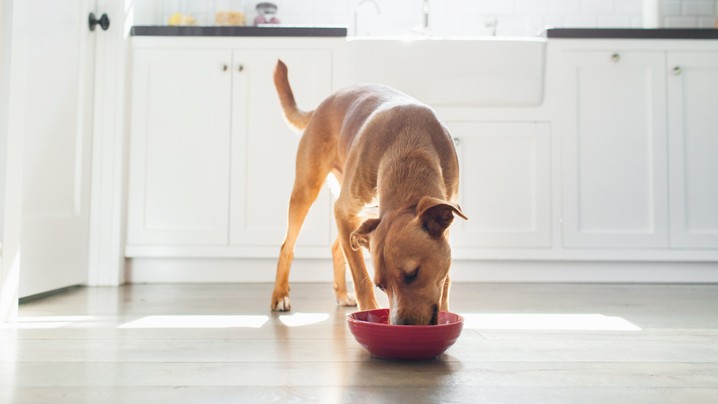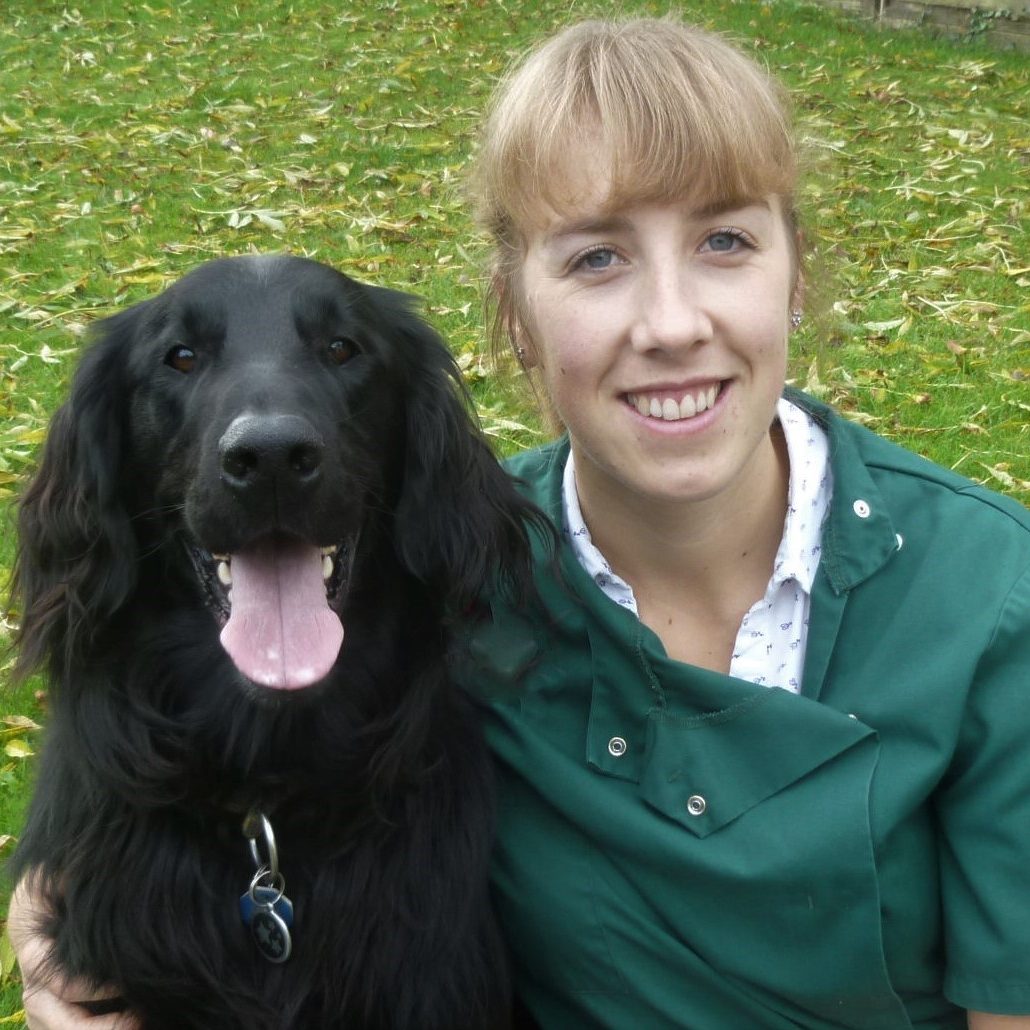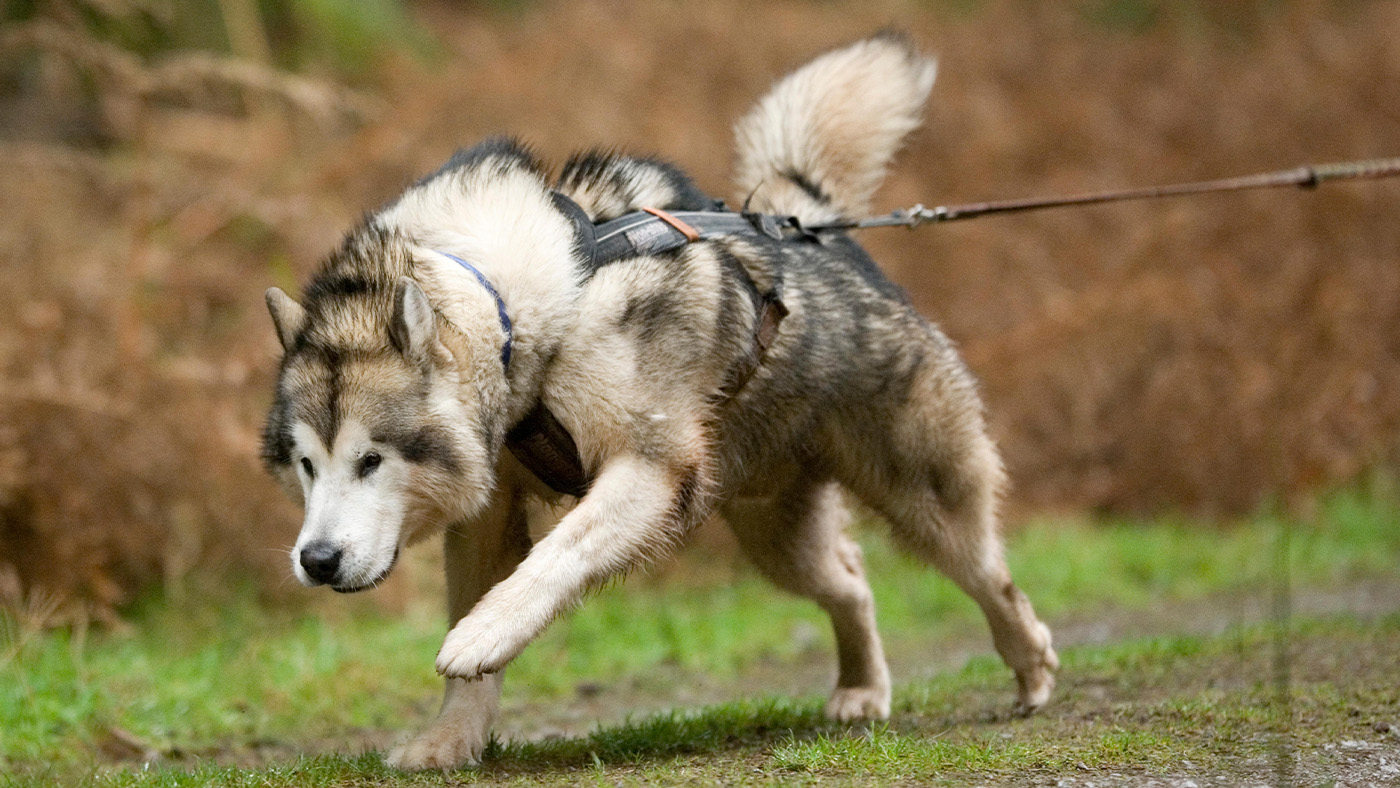Why do dogs eat too fast and how do you slow them down? We spoke to a vet to find out!
Why do dogs eat too fast? It could be due to one of these five reasons…

Why do dogs eat too fast? If your canine companion tends to wolf their food down at lightning speed, it’s a question you may well be asking.
If you’ve gone to the trouble of picking out the best dog food for your fur friend, it may feel disheartening to have them lick their bowl clean without savoring their meal but unlike us, our canine companions tend to have a different approach when it comes to eating!
Still, even though dogs are prone to eating quickly, it’s worth monitoring this behavior as it does have the potential to cause risks to your pup’s health. Plus, on rare occasions, there could be a reason your dog is inhaling their food so quickly and this requires investigating.
To help you figure out what’s normal and when you need to be concerned, we turned to expert vet Dr. Rebecca MacMillan. Below, she answers the question ‘why does my dog eat fast?’ and shares her top tips to help slow them down.
Why do dogs eat too fast?
First up, it’s possible that your pooch is just really hungry and can’t hold back their appetite each time their food bowl gets placed down in front of them. A love of food is definitely one reason why your dog could be eating too fast! But if you’re concerned there might be something else going on, here are three common reasons for quick eating:
1. Competition
There are two main causes that drive dog’s approaching their food from a competitive point of view. The first is if there are other dogs in the home. If this is the case, your pup may feel the need to eat quickly to ensure that their brother or sister doesn’t try and swoop in and steal what’s theirs.
Get the best advice, tips and top tech for your beloved Pets
The second driver is if your dog came from a large litter where they may have had to regularly compete with their littermates for food. If they had to compete early in life for nourishment, they often carry this behavior through into adulthood.
"If a dog feels under threat when eating, they may gobble their food down more quickly to avoid it from being stolen by the competition," confirms Dr. MacMillan.
In instances such as these where your fur friend feels they're competing for food, resource guarding in dogs and food aggression in dogs can become an issue. If you notice that your pup is being protective of their food or they're behaving defensively around food, speak with your vet.
2. Underlying Illness
There are several common illnesses dogs get that can cause them to eat too quickly. "Dogs with health complaints such as digestive/malabsorption issues, parasites, Diabetes mellitus, or Cushing's disease may have an increased appetite due to the effects of their condition," explains Dr. MacMillan.
If you’re at all concerned that there may be a medical reason behind your dog eating too fast, book an appointment with your vet who will be able to rule out any underlying health issues. You can also check out our vet's guides to diabetes in dogs and Cushing's disease in dogs for more on these two conditions.
3. Scarcity
The third common cause of fast eating is driven by your dog having a scarcity mindset and this is most likely if you adopted your pup from a shelter or other rescue organization.
Shelter dogs often spent time on the street and because they didn’t have access to regular food, they may have developed fast eating habits to get as much food into them as they could.
If your dog wasn’t a stray but was instead relinquished to a shelter by their former owner, it could be that in their previous home there were no regular mealtimes or there was a great deal of inconsistency around portion sizes. If proper feeding etiquette was absent, fast eating is often the result.
"If a dog has been through periods of starvation or irregular feeding times (either due to neglect or inappropriate attempts at weight reduction), they may wolf their food down out of hunger and the fear of not knowing when their next meal might be," Dr. MacMillan confirms.
4. Medication
Why is my dog always hungry? Well, something you may not have thought about is the role that medication can play in boosting your dog's appetite and encouraging them to eat quickly.
"Certain medications such as glucocorticoids (steroids) may cause your dog to have an increased appetite, leading to faster eating," explains Dr. MacMillan.
5. Poor nutrition
"Feeding a diet that is inappropriate for your pet or that is low-quality and lacking in essential nutrients could leave your dog feeling hungrier than usual," explains Dr. MacMillan.
Wherever possible, try to feed your pup a diet of the best dry dog food or a wet food equivalent. While expensive brands aren't viable for most of us to be buying on a regular basis, there are lots of affordable products on the market that are delicious, nutritious, complete and balanced.
Is it bad if a dog eats too fast?

Even if there’s no underlying reason why your dog is eating too fast and their tendency to inhale food is purely out of excitement, this kind of quick eating does pose a number of risks that are worth being aware of:
1. Digestive issues
While not in any way life-threatening, gulping food down can result in unnecessary stress being placed on the digestive system, which is forced to try and process a large amount of food in a very short space of time.
"Dogs that bolt their food down too quickly are more prone to vomiting and diarrhea than a dog who takes their time," says Dr. MacMillan. While these are mostly time-limited symptoms and likely to resolve themselves, they can lead to longer-term issues and complications.
If you find yourself dealing with these issues, here's how to help a dog with diarrhea.
2. Choking
"Choking can be a real issue for dogs that don't chew their food properly," Dr. MacMillan says, adding that "small and brachycephalic (flat-faced) breeds are at particular risk."
If you ever find yourself in this situation or you worry your dog is at risk, our guide for what to do if a dog is choking could help save your pup's life.
3. Gastric Dilatation-Volvulus (GDV)
GDV in dogs is an incredibly serious and life-threatening condition and deep-chested dog breeds (such as the Great Dane and the Doberman Pinscher) are more prone to it than other breeds. GDV occurs when the stomach twists because too much food has been consumed and it requires immediate veterinary attention due to the high risk of a rupture occurring.
"If your dog becomes bloated after eating and their stomach twists on itself, then an emergency known as GDV can occur. This can be fatal, and dogs suspected to have a GDV must see a vet immediately," Dr. MacMillan stresses.
4. Bloat
What is bloat in dogs? Caused by your dog taking in too much air while they eat, bloating of the stomach isn’t as serious as GDV but it can be very uncomfortable for your dog and because it’s impossible to tell the difference between food bloat and GDV, a trip to the vet will be necessary to rule out the latter.
How do I get my dog to slow down when eating?

Now that you’re aware of some of the common causes of fast eating and how gobbling down food too quickly can pose a risk to your dog’s health, it’s time to look at some practical ways to slow your doggy down at mealtimes. Here’s a few of our favorites:
1. Invest in a slow feeder bowl
Slow feeder bowls do a brilliant job of helping to pace the speed at which your dog eats. These bowls are designed with a number of built-in obstructions, like bumps and soft spikes, that will physically prevent your canine companion from eating too fast. And as a bonus, they act as a nice enrichment activity too as your dog has to work for their food.
2. Multiple small meals
"Dividing your dog's daily rations into several smaller meals spread through the day, can reduce the risk of digestive issues and choking. Plus your dog's eating may calm down once they work out that their food will be coming to them regularly," explains Dr. MacMillan.
3. Hand feeding
Okay, so we know this one is pretty labor-intensive, but if your canine companion is gulping their food down too quickly, hand feeding them over several minutes can be well worth the time and effort.
4. Try a food dispensing toy
Making your dog put some effort into getting their food will really help slow down the pace at which they eat. You can try stuffing a KONG toy (here's how to use KONG toys), using a toy that’s been designed to dispense food (the best dog puzzle toys are ideal for this) or even turning a muffin pan upside down and pouring your dog’s food into the crevices where they’ll be forced to dig it out. Snuffle mats can also be a really great way to put a stop to fast eating.
5. Get them checked over by a vet
"If you are concerned that your pet has changes in their weight, behavior, or drinking habits as well as their eating, then get them checked over by a vet in case there is an underlying medical issue. You can also discuss your pet's diet with your vet and ensure you are feeding them correctly," says Dr. MacMillan.
Dog not eating? Here's what to check if your pup is off their food.

Rebecca is a vet surgeon who graduated from the Royal Veterinary College in 2009. She has a wealth of experience in first opinion small animal practice, having done a mixture of day-to-day routine work, on-call emergency duties and managerial roles over the years. She enjoys medicine in particular and she is proud to have recently achieved a BSAVA postgraduate certificate in small animal medicine (with commendation). She writes on various feline and canine topics, including behavior, nutrition, and health. Outside of work and writing she enjoys walking her own dog, spending time with her young family and baking!

Kathryn is a freelance writer who has been a member of the PetsRadar family since it launched in 2020. Highly experienced in her field, she's driven by a desire to provide pet parents with accurate, timely, and informative content that enables them to provide their fur friends with everything they need to thrive.
Kathryn works closely with vets and trainers to ensure all articles offer the most up-to-date information across a range of pet-related fields, from insights into health and behavior issues to tips on products and training.
When she’s not busy crafting the perfect sentence for her features, buying guides and news pieces, she can be found hanging out with her family (which includes one super sassy cat and a kitten), drinking copious amounts of Jasmine tea and reading all the books.
She has written for a range of publications, including Fit&Well, Top Ten Reviews, LiveScience, Goodto, and Product Hunt.
